Snake plants are a common houseplant, also known as mother-in-law’s tongue or sansevieria, and have become increasingly popular. It will be identified by its evergreen sword-shaped leaves that grow upright and resemble artificial foliage. Snake plants are evergreen perennials that grow from eight inches to a maximum height of 12 feet. These plants have sword-like leaves that are nearly two feet long.
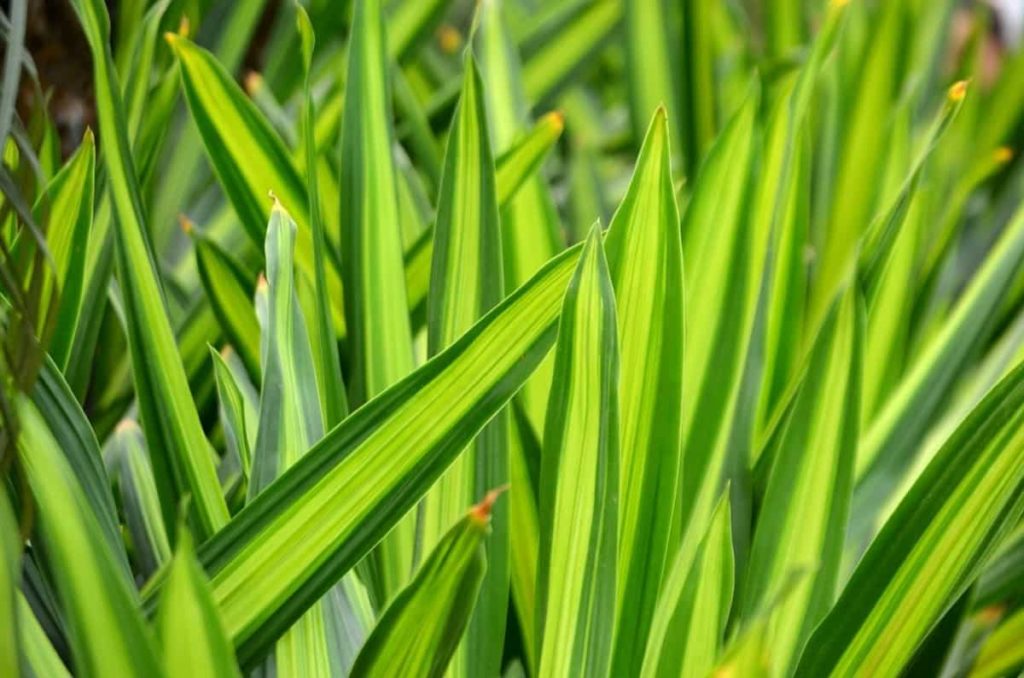
The foliage is stiff, wide, and upright, in a dark green color variegated with white and yellow striping. The snake plant is more popular for its ability to survive in the most unsuitable growing conditions. Snake plants are generally used for home decoration as they are pleasing to the eye, are easy to maintain, and require little water to survive. With their striking lines and hardiness, snake plants are the houseplants.
They also serve as air purifiers to improve the home’s air quality. Snake plants are considered relatively safe but mildly toxic if consumed. These plant leaves have a poison that can cause swelling and numbness on the tongue if eaten in large doses. Keep the snake plant away from children and animals. The snake plant is commonly a resilient succulent that can grow anywhere. The average lifetime of this plant is five to ten years. However, some varieties can live up to 25 years or more.
How to grow snake plants
Snake plant varieties
Mother-in-law’s tongue
This variety is the most widely cultivated snake plant. Its flowers bloom in white or cream colors and look like lilies. These plants have dark green pointed leaves that grow upward and can attain up to 3 feet.
Twisted sister
Twisted sister is a succulent with bright gold and green variegated leaves that twist as they emerge from the base and look like a bird’s nest. It has pointy leaves twisting from the top. These plants will grow up to 2-3 feet tall and has a yellow variegated border with horizontal stripes. It grows up to about 15 inches.
Golden hahnii
It is a dwarf variety of the famed snake plant family. This Sansevieria Golden Hahnii sports beautiful variegated leaves in grey-green with dark green bands and golden yellow margins. It is a less maintenance plant that is hard to kill, even for most novice gardeners. Their compact size makes them great for office desks and small spaces. Its dark green foliage has a creamy margin with an upright and dense rosette appearance, making it the perfect choice to decorate coffee tables.
Futura robusta
Futura robusta snake plants have attractive large twisted narrow leaves. These plant leaves remain grayish green in color with showy dark green variegation and tinges of silver throughout the year. This plant is an evergreen houseplant with an upright spreading habit of growth.
In case you missed it: Indiana Vegetable Planting Calendar/Guide (IN): Month Wise, Fall, Winter, Spring, Summer, Zone 5, and Zone 6
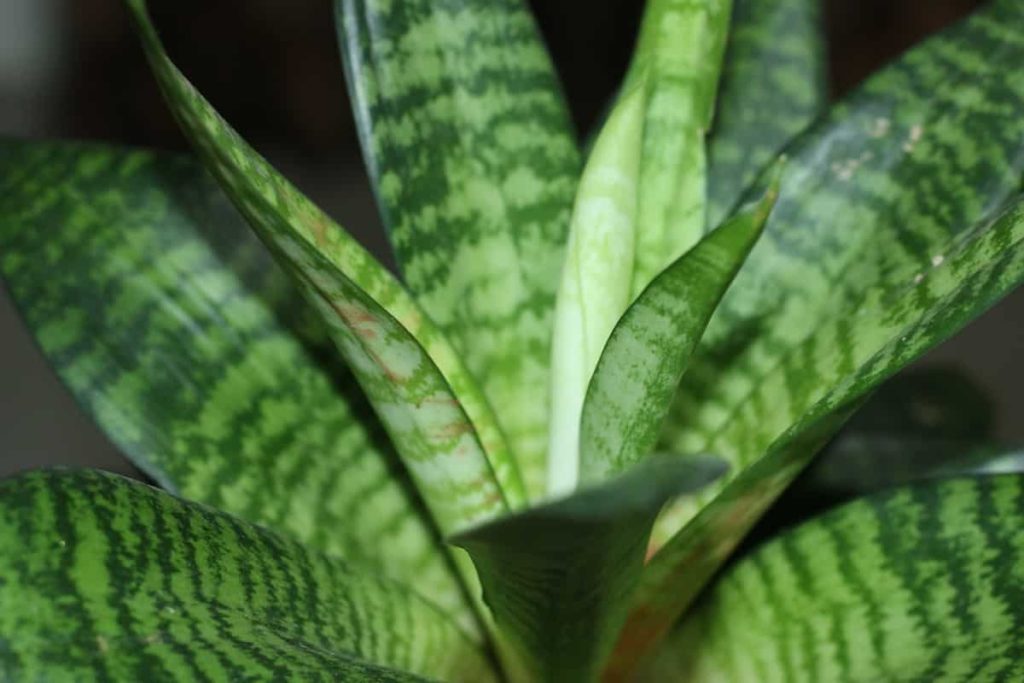
Black gold
The black gold snake Plant is a striking indoor plant known for its easy care and sleek, architectural look. Tall green leaves are edged in gold. Due to its slow growth habit, it can tolerate lower light conditions and infrequent waterings and requires no pruning.
Cylindrica
Dracaena cylindrica is an evergreen, rhizomatous succulent species. These plants have tall, cylindrical, smooth, green-grey striped leaves arising from a central stem in a fan-shaped arrangement. This variety looks like a lucky bamboo plant. This plant can grow up to 20-24 inches tall and thrives well in indirect sunlight.
Laurentii
Snake Plant grows to a maximum height of 2 to 4 feet with a spread of one or two feet in the wild. Growing as potted houseplants typically top at about two feet high and spread to fill the container. The plant is slow-growing and will live long. These plants have dark green leaves with yellow borders that look beautiful with zig-zag, horizontal stripes. It grows up to 30-24 inches long. Divide the plant for propagation.
Bantels sensation
Bantels sensation is a striking variety of the snake plant, boasting distinctive white vertical striping on its thinner-than-usual leaves. This cultivar can grow up to 30-32 inches tall, making it the best choice as an indoor plant. It makes quite a statement with a faint white line running at the border on its narrow leaves.
Desert
The snake plant thrives in many locations, often problematic for other houseplants. Its heavily marked leaves also make this desert plant imposing and highly modern. Also known as the rhino grass, it has pointed succulent leaves with a red tint. It grows upward, reaching a height of 20-24 inches.
Moonshine
It is a succulent that is vigorous to grow as an indoor or outdoor plant. These plants have extraordinary silvery leaves that are broad, with a narrow dark green margin found along the edges. It thrives well in neglect and does not need much attention.
Mason congo
Masoniana is a semi-succulent plant with wonderful dark green leaves, also known as the Whale fin or Sharkfin snake plant. This succulent has stunning foliage, with dark green leaves and light green spots. The leaves can grow up to 4 feet long and 10 inches wide.
Star sansevieria
It is also known as the Pangane Sansevieria, and this variety is more popular among houseplant growers. It has dark green foliage with unique and fluorescent green patterns.
Gracilis
Gracilis is a caulescent, herbaceous specie ascending slightly to spreading or trailing in cultivation. It has a delightful, intensely sweet, scented flower. The plant spreads via aerial, eventually forming mats of leaves. This compact variety of snake plants has long, narrow, and plumped leaves ringed in white-green color. Partial, bright, and indirect sunlight are ideal for them.
Patens
Patens is an attractive succulent snake plant variety that forms large rosettes composed of short, arching, longitudinally grooved leaves. They generally can grow up to 3 feet tall. Low waterings and bright, indirect sunlight are best for them.
Canaliculate
Canaliculate is a stemless succulent snake plant variety that grows near tropical coastal regions. It has cylindrical leaves and looks like Sansevieria Cylindrica. They grow straight or slightly curved from the underground rhizomes. Canaliculate grows up to 3-4 feet tall. This variety cannot withstand drought, so keep them indoors during winters.
Sansevieria ballyi
This variety is also called dwarf sansevieria. It can grow to 6 inches with dark green leaves with a light green stripe at the edges.
In case you missed it: Emerging Trends in Agriculture in India: A Guide to Future of the Farming
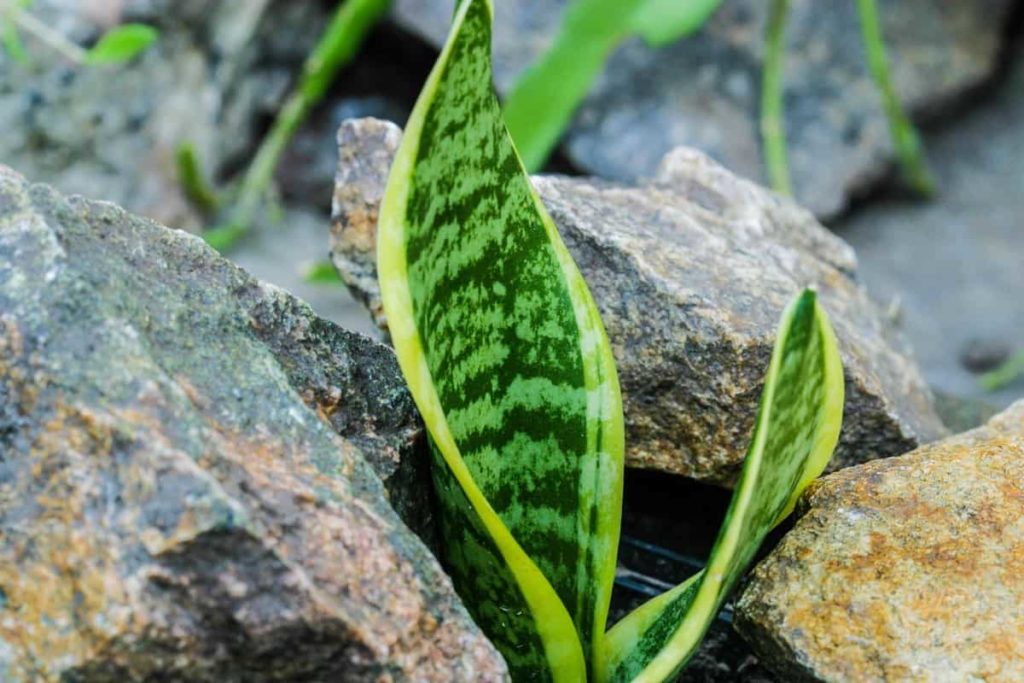
Cleopatra
Cleopatra is a beautiful, slow-growing hybrid with an intricate pattern on its leaves, which grow in a perfect rosette and grow as houseplants in cooler climates. They do well with warm and bright light but tolerate shade. They are grown in well-draining and not over-watered, or they may rot. This attractive hybrid variety is growing up to 12-14 inches long. The edges of their foliage are brown with an intricate pattern of dark green.
Kenya hyacinth
Kenya hyacinth, also known as Sansevieria Parva, has thick, 8-16 inches long dark green banded leaves growing out of small heavy rosettes. Small, pink, and white flowers in the form of spikes have a fragrant hyacinth scent at night. Kenya hyacinth grows as a rosette with 6 to 12 leaves, reaching a height of 16 inches. It has white flowers with a good fragrance, like hyacinth.
Eillensis chahin
This snake plant variety has blue-green and long leaves and grows to a maximum height of 5 inches. It has spiky flowers and will grow up to 12 inches. This snake plant is drought resistant and does not require much water.
Ceylon bowstring hemp
The Sansevieria Zeylanica is also known as bowstring hemp, devil’s tongue, and Ceylon bowstring hemp. It is a tropical plant well known for its robust, upright leaves. This evergreen perennial plant variety grows up to 24-28 inches long. These plants have vertical dark green leaves with small and large white spots.
Whitney
This compact snake plant variety has a snakeskin-like pattern on the leaves. It can grow up to to the height of 20 inches. The dark green, sword-like leaves have sharp tips that are very hard to touch.
Bacularis
This snake plant is in dark green leaves with light crossbands and soft leaf tips. It grows up to 4-5 feet long and flowers during spring. This variety is well grown in a warm, bright location.
Soil for snake plants
These hardy plants grow well in the rocky, arid desert soil. The correct soil mixture will lead to healthy snake plants. Otherwise, they are prone to overwatering and damage such as root rot. Any regular garden soil bag might not benefit the snake plant. The best way is to either buy or create the ideal soil mix.
Snake plants are well grown in a free-draining soil mix because they are easily prone to rot. A soilless potting mixture is best to ensure adequate drainage. Also, use a terracotta pot that will not trap water inside and promptly remove any standing water from the saucer.
Steps to grow snake plant
Snake plants can grow from seeds, but it is easier, quicker, and more reliable to propagate by other methods, as snake plant seeds have low germination rates. Starting seedling from seed will take three to six weeks.
Growing snake plants from seeds
To grow from seed, fill a pot with a well-draining potting mix. Sow the seeds on top of the starting mix and place the pot in a sunny spot. Cover the pot by using a plastic cover to maintain warmth and humidity. Remove the plastic covering once you notice seedling growth. Keep the soil sufficiently moist but not too soggy or wet throughout germination. The seedling will be ready to transplant to a new pot when it is three to four inches tall.
Growing snake plants from cuttings
Tolerant and no-nonsense evergreen plants, snake plants are easy to grow. Snake plants can be easily propagated & grown by cutting and dividing. Choose a pot with a drainage hole at the bottom, preferably a terracotta one. Fill this pot with free draining soil to reduce the chances of rotting. Using a sharp pruner, cut the plant into sections, leaving the roots of each section intact. Separate and replant the new snake plant sections into a new pot.
In case you missed it: How to Start Tomato Farming in Africa: Production Guide for South Africa, Egypt, Nigeria, Kenya, Ethiopia, and Zambia
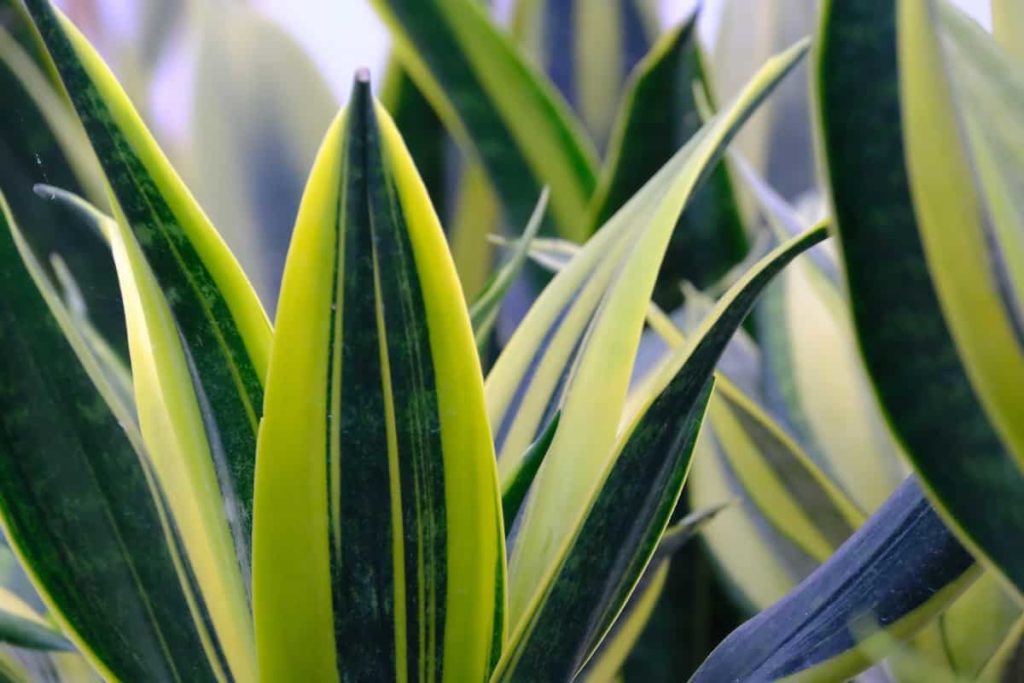
How to propagate snake plant
Unique foliage patterns like mottled leaves or gold leaf margins are usually lost when the snake plant is multiplied by cuttings. A variegated leaf cutting will root, and new shoots or pups emerge, usually solid green. However, a cutting will not produce a replica of the parent plant. The division is the way to get a new plant that looks exactly like the parent plant. Dividing the snake plant will give new plants with the same leaf coloring as the original plant.
Divide a snake plant
Division involves cutting the plant into sections, which is used to multiply larger snake plants. First, pull out the entire snake plant from its pot. Use a sharp knife or pruning cutter to cut the tightly tangled root ball apart. Try to create divisions with at least three leaves and with some roots. Replant this plant section in a new pot filled with potting soil mix and regularly water it to grow as a new plant.
Plant root generation from leaf cuttings in the water
Rooting snake plant cuttings is an easy way to propagate a snake plant by placing a leaf into a jar of clean water. Cut a leaf from a well-grown snake plant. The separated leaf portion should be at least 6 inches long. Place the cut end in a jar filled with water. Place the jar in a bright lighting spot and refresh the water weekly. Roots will be formed at the base of the cutting in about two months. After root formation, plant the rooted cutting in a container filled with houseplant potting mix.
Plant root generation from leaf cuttings in the soil
Snake plant leaf cuttings will root in a moist potting mix, too. First, remove a leaf from a well-established plant. Prune the leaf at the base of the plant with pruners or a knife. The number of new plants can be maximized by cutting the leaf horizontally into 2-inch pieces. Make angled cuts or notch the leaf pieces to easily identify which end is the bottom and which is the top.
Potting and repotting snake plant
Choose a sturdy pot material when potting, as strong roots can easily crack and break weak pots. Dracaena is a commonly slow grower that rarely needs repotting, but if given ample sunshine, these plants also might grow rapidly and require repotting. The best time to transplant these plants to a new pot is spring. Always use fresh potting soil or a cactus soil mixture when repotting.
Snake plant care
Light
Snake plants require bright, indirect light and can even tolerate some direct sunlight. However, they can grow well in shady corners and other low-light home areas. The mother in laws tongue is more popular for coping with direct sunlight and low light conditions. However, bright light conditions with some sunlight and shade are preferred.
In case you missed it: How to Start Brinjal Farming/Eggplant in West Bengal: Planting to Harvesting Guide for Beginners
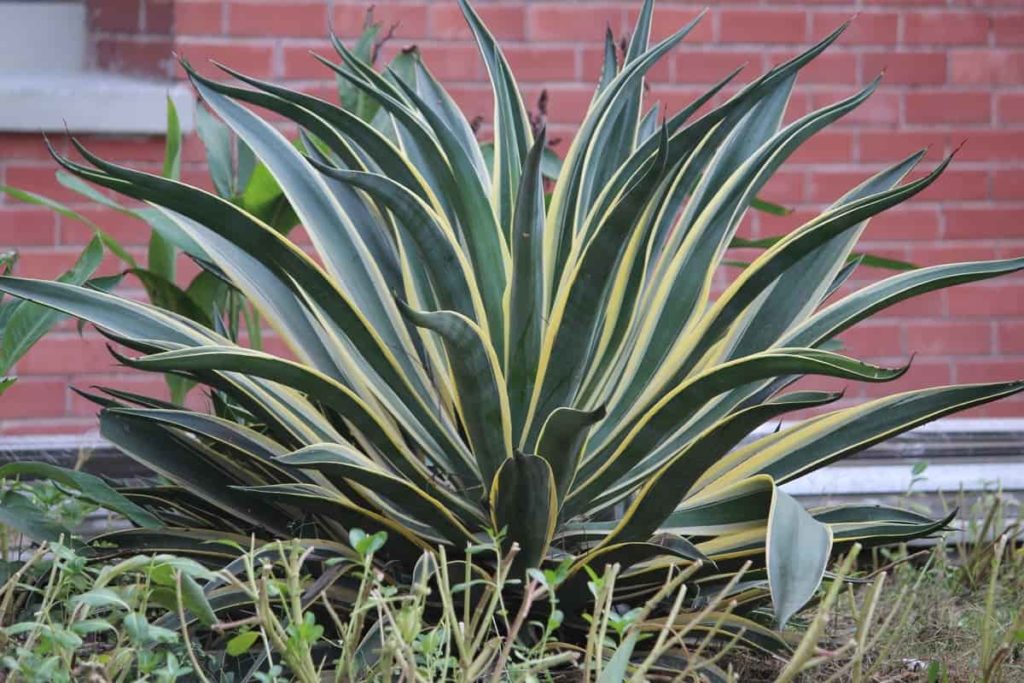
Water
Few plants should be constantly moist, and fewer should not require watering as they do not require much moisture. Maintain the leaves clean and free from dust and grease. Other care includes keeping the plants moist but not wet and feeding occasionally. Water the plants when the soil dries and during the winter only once a month. Be careful not to overwater as this can cause the root and base of the plant to rot.
Temperatures
Snake plants are well grown in temperatures ranging from 13°C to 30°C. However, they prefer warmer temperatures. Temperatures below 10°C can cause them harm.
Overwintering effect on snake plants
The snake plant will die when temperatures drop below 10°C or if affected by a wintery frost. Place the snake plant in a warm room to protect it from cold drafts, and maintain the soil on the drier side. During the winter, snake plants enter inertness and will stop growing. So move the plant indoors before temperatures drop that low.
How to get snake plant to bloom
Snake plants have creamy-white, tubular flowers that look like lilies. These flowers bloom annually when their water, sun, and humidity are at the most optimum levels. However, when these plants are grown indoors, they will bloom rarely. Its flowers are fragrant and bloom at night. They drop on their own; no need to deadhead these flowers.
Growing snake plants faster
Snake plants grow faster by planting them in the right pot, when they get the appropriate amount of water, when they are exposed to more sunlight, fertilize regularly, and are free from pests and disease. Snake plants are the most resilient houseplants, but even they need certain conditions to thrive and grow.
Choose the right pot
When planting or repotting the snake plant, choosing the correct pot size is important. Snake plants do best in smaller pots. However, growth will drastically slow down or stop if the plant becomes rootbound. It is time to repot the plant. Take a pot 1–2 inches bigger than the previous pot to give the roots sufficient space to grow.
Provide the correct amount of water
Both underwatering and overwatering the snake plant can affect its growth. A plant that is underwatered is not getting the nutrients it needs to be able to grow. On the other hand, underwatered plants lack the nutrients they need to grow. Snake plants with excess water can suffer from root rot. If the snake plant has root rot, treat it immediately.
Expose the snake plant to more sunlight
Snake plants prefer lots of bright and indirect sunlight. Snake plants growing in a dim room or dark corner, move them to a sunny spot closer to a window for a few weeks and see if growth speeds up. It is natural for snake plants to become dormant in the winter. Use an indoor grow light to mimic indirect sunlight to help the snake plant continue to grow through the winter.
Fertilize regularly
Snake plants will grow fast when fed with good fertilizers. Fertilize them once every 4–6 weeks to boost plant growth. However, full-strength fertilizer is much too strong for this plant species. It may be overfertilized if the plant starts turning brown or stops growing. In that situation, adjust the fertilization schedule to once every eight weeks.
Common pests attacking snake plant
Snake plants are prone to mealybugs and spider mite infestations. These pests suck secretion from the plant, weakening it and causing wounds and shedding of the leaves. Heavily infested plants are better off discarded because pest control would be lengthy and risk infection of nearby plants. Common snake plant pests damage the plant and stunt its growth. Thin white webs can indicate spider mites.
Tiny white insects or tiny cotton-like bits on the leaves could be mealy bugs. Insects generally attack when it suffers from environmental issues like incorrect water levels, humidity, and air circulation. Remove them by picking them off, using a gentle spray of water, or with organic neem oil to keep them at bay.
Growing snake plants indoors
Snake plants have gained popularity among the most commonly grown indoor plants because of their hardiness and easy-to-grow and air-detoxifying qualities. Similar to other succulents, snake plants help to filter indoor air. It is one of the plants that can convert carbon dioxide into oxygen at night. This quality makes it most ideal plant for bedroom decor since it can help regulate healthy airflow.
Snake plants prefer bright, indirect light and even can withstand some direct sunlight. However, they grow well in shady corners and other low-light home areas. Avoid moving the plant from a low-light area to direct sunlight too quickly, as this can shock the plants. Allow soil to dry and do not overwater in winter. Place the snake plants in indirect light and fertilize them during the growing season.
In case you missed it: Arkansas Vegetable Planting Calendar (AR): Month Wise, Fall, Winter, Spring, Summer, Zone 6, Zone 7, and Zone 8
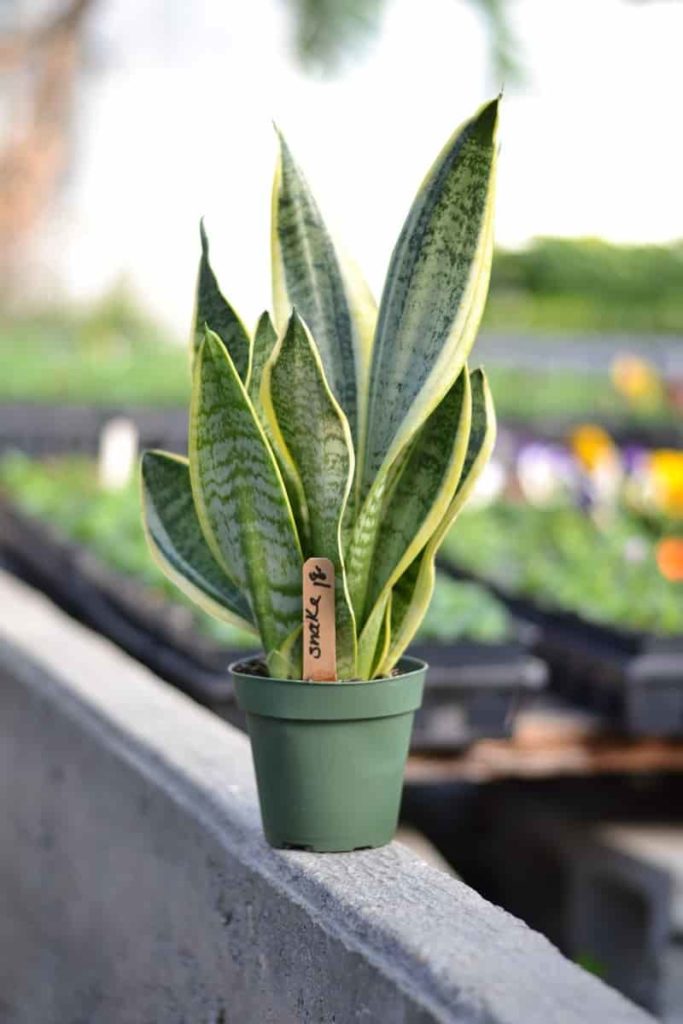
Snake plant benefits
Along with providing a bit of ambiance, snake plants have several benefits, including
Filter indoor air, even at night
These plants clean the air from toxic substances, particularly benzene, formaldehyde, xylene, and trichloroethylene. While cleaning the air also provides the room with high humidity and oxygen levels. These abilities of snake plants keep the surroundings clean and fresh.
Used for home decoration
The snake plant’s architectural and tall-shaped leaves make it a perfect decorating plant for the home and office corners.
Snake plants can be grown even in drought conditions
Snake plants can be grown in very less water supply conditions. It is a highly drought-resilient plant, even in summer. Snake plants are ideal to have, where regular watering is not possible
Grows in various humid conditions
snake plants grow best in a room where the humidity is generally at 40%. However, snake plants can withstand a wide range of humid conditions. They are well grown in humid climates such as bathrooms.
Easy to propagate
Every species of snake plant is very easy to propagate. These plants are easily propagated by dividing and planting them in separate pots. And also, the plant roots can be easily formed when buried in soil or dipped in water for certain days.
Low-maintenance
Snake plants are easy to maintain. They can thrive without water and sunlight. Plant them in any condition, and they will bless you with their rare beauty and air-purifying properties.
- How to Raise Pigs in Your Own Backyard: A Comprehensive Guide
- Budget Friendly Sheep Shed Ideas: Cheap and Low-Cost Tips
- How Much Do Cattle Farmers Make: Revenue Streams in Cattle Farming
- Management Pests and Diseases in Your Cotton Field
- Sheep Farming Business Plan for Beginners
- Aquaponic Farming at Home: A Step-By-Step Guide
- Profitable Village Farming Business Ideas in 2024
- High-Yield Aquaculture: Fast-Growing Fish for Farming
- Effective Fish Pond Construction Techniques for Beginners
- Irrigation and Water Management in Pineapple Farming
- Blossom to Harvest: Mastering Flowering and Pollination in Papaya Farming
- Pig Fattening Essentials: From Selection to Sale for Beginners
- Raising Wagyu Cattle: A Complete Guide for Premium Beef Production
- Soil Types and Their Water Holding Capacity
- Optimizing Irrigation Schedules for Coconut Groves for Enhanced Yield
- Espresso Your Garden: Coffee Grounds for Healthier Acid-Loving Plants
- The Best Soil Mix for Snake Plants: How to Mix Your Own Snake Plant Soil
- Green Thumb Success: Expert Tips for Cultivating Greenhouse Beans All Year Round
- Bloom All Year Round: The Ultimate Guide to Indoor Hyacinth Care
- Eco-Friendly Gardening: How to Make Liquid Fertilizer from Kitchen Waste
- Ultimate Guide to Grow Anise in Pots: Explore Seed Propagation to Harvesting
- Guide to Raising Chester White Pigs: Discover Breed Facts to Growth Management
- Mastering the Elegance: The Ultimate Guide to Weeping Cherry Tree Care, Planting, and Maintenance
- Ultimate Guide to Planting Garlic in Grow Bags: Growing Strategies for Beginners
- How to Fix Spider Plant Leaf-Related Problems: Natural and Organic Remedies
- 10 Reasons Why Your Tulsi Plant is Shedding Leaves: Home Remedies and Solutions
- Optimizing Growth and Yield: The Advantages of Palm Bunch Ash Fertilizer
- Utilizing Neem Oil Extract as a Natural Pesticide for Hydrangea
- From Soil to Harvest: Various Ways in Which Farmers Can Use AI Tools
- Steps to Encourage and Induce Citrus Flowers: A Comprehensive Guide
- How to Fix Snake Plant Leaf-Related Issues: Natural and Organic Remedies
- Transform Your Garden into a Fragrant Oasis with Raat Ki Rani (Night Blooming Jasmine)
- Discover the Ideal Chicken Breeds for Philippine Farms
- How to Create a Poultry Egg Farm Business Plan for Profits
- Grow Lemon Cucumbers Like a Pro: Insider Techniques for Bountiful Yields
- Ultimate Guide to Caring for Your Pink Princess Philodendron: Tips for Thriving Variegation
